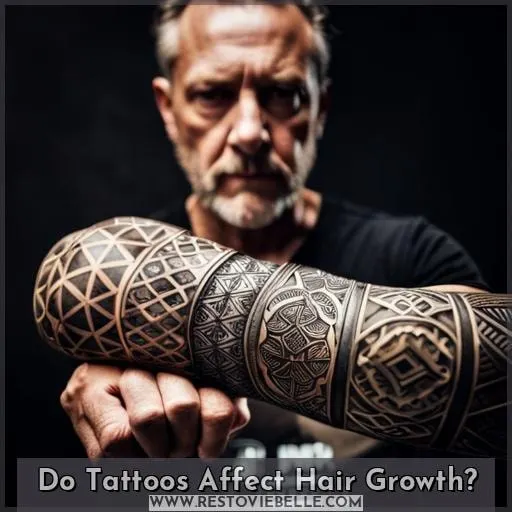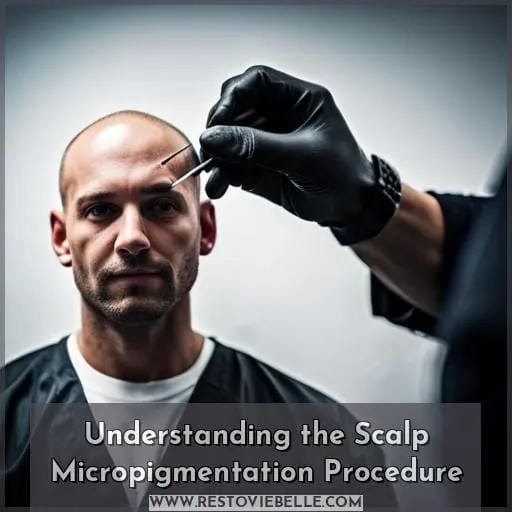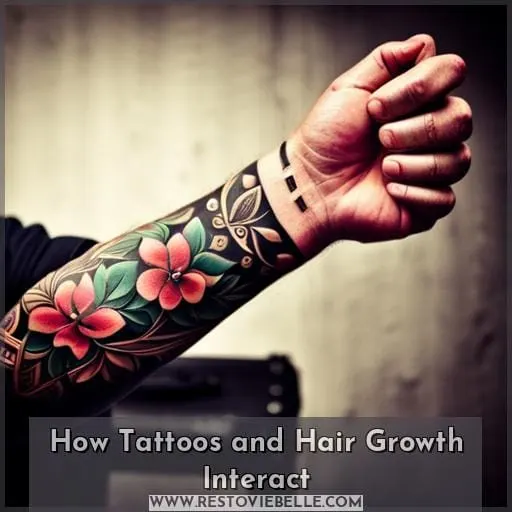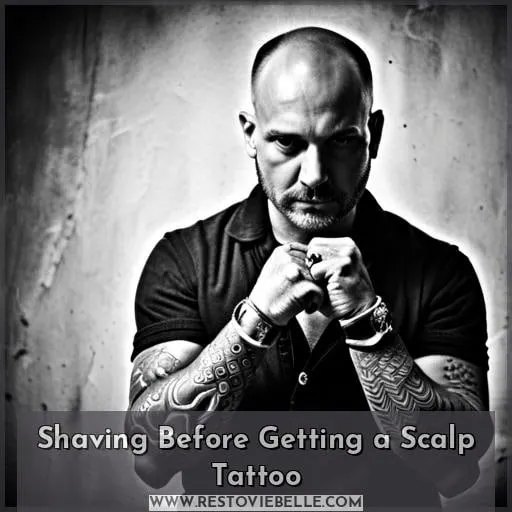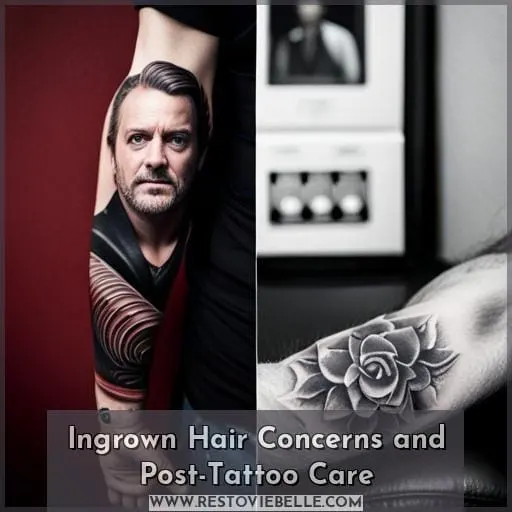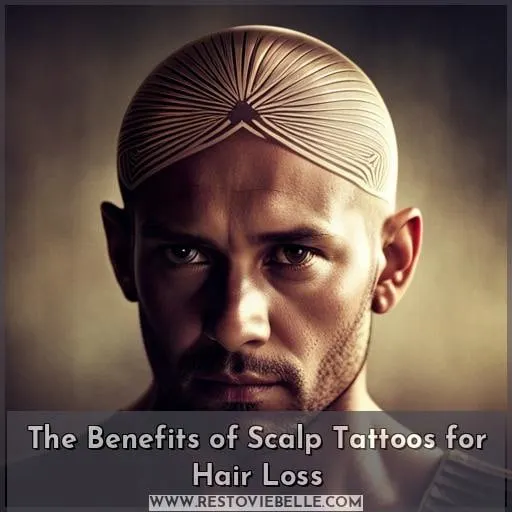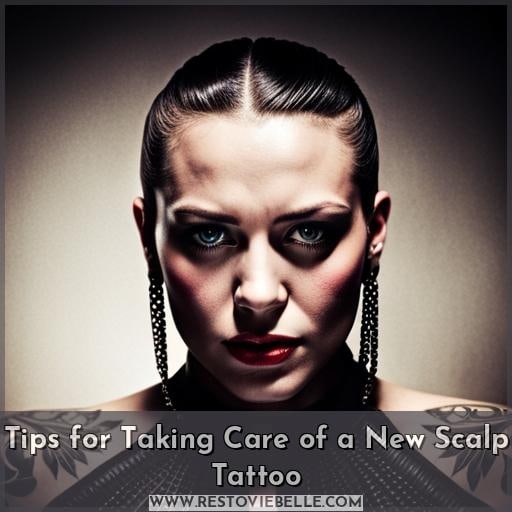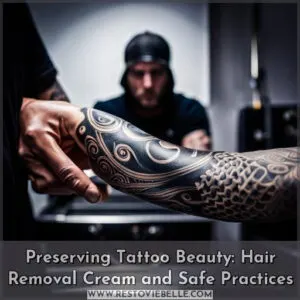This site is supported by our readers. We may earn a commission, at no cost to you, if you purchase through links.
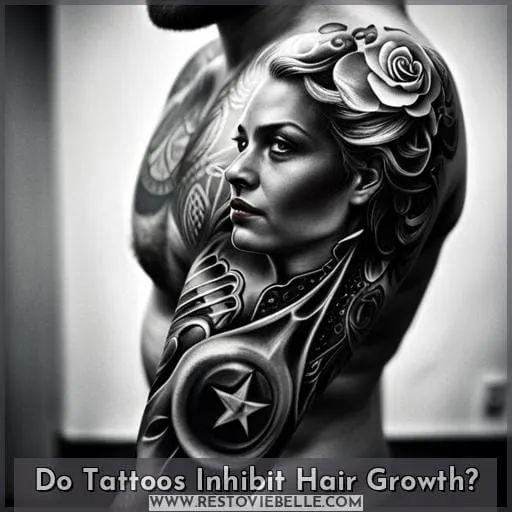 Are you considering scalp micropigmentation for your hair loss concerns, but worried that it might inhibit hair growth? You’re not alone.
Are you considering scalp micropigmentation for your hair loss concerns, but worried that it might inhibit hair growth? You’re not alone.
The truth is, when done correctly and with proper care, scalp tattoos will not affect your follicles or disrupt natural regrowth in any way. In fact, they are a low-maintenance solution to concealing scarring due to alopecia and other causes of permanent baldness or thinning.
Read on to learn more about how scalp tattooing interacts with existing hairs as well as tips on taking care of a new tattoo!
Table Of Contents
- Key Takeaways
- Do Tattoos Affect Hair Growth?
- Understanding the Scalp Micropigmentation Procedure
- How Tattoos and Hair Growth Interact
- Shaving Before Getting a Scalp Tattoo
- Ingrown Hair Concerns and Post-Tattoo Care
- The Benefits of Scalp Tattoos for Hair Loss
- Are Scalp Tattoos Right for You?
- Tips for Taking Care of a New Scalp Tattoo
- Conclusion
Key Takeaways
- Scalp tattoos, when done correctly, do not hinder hair growth.
- Tattoo pigment is inserted 2mm deep, while hair follicles are 4mm below the scalp.
- Hair growth is not affected by tattoo ink, which is injected into the dermis.
- Scalp micropigmentation does not prevent hair growth; it creates the illusion of hair follicles.
Do Tattoos Affect Hair Growth?
You may have heard about scalp tattoos, but you should know that they don’t impede your hair’s natural growth cycle. In fact, the procedure can even be customized to fit individual needs. Tattooing does not affect existing or future follicles – the pigment is inserted 2mm deep while hair follicles are 4mm below the scalp.
Hair maintenance may need to be done after a tattoo for areas with lots of body hair as it might alter its appearance over time. Routine shaving could help maintain its look. When choosing a location for your tattoo, keep in mind how hairy it is so proper preparation, including cleaning and sometimes shaving, can take place beforehand without affecting long-term growth potential.
After healing, any removed hairs will eventually regrow if good care was taken during the initial healing phase. It’s important to avoid scented lotions or other irritants which could cause ingrown hairs down the road.
Scalp tattoos provide an effective non-surgical solution with customizable results and no worry of impacting further growth potential, making them an ideal choice when considering options available.
Understanding the Scalp Micropigmentation Procedure
If you’re seeking a long-term solution for hair thinning or baldness, scalp micropigmentation may be an option. Customizable to individual needs and offering lasting results, the procedure should only be carried out by an experienced technician who can advise on the best approach for your specific needs.
Customization and Long-lasting Results
With personalized treatments, you can enjoy a freshly-shaven look that masks bald spots and receding hairlines for years to come. Scalp tattoos offer customization options with ink selection, technician expertise, and maintenance plans tailored to your individual needs.
Plus, the longevity benefits of scalp micropigmentation are undeniable: no other hair regrowth treatment offers such long-lasting results! With proper care after each session and regular touch-ups as needed over time – these tiny tattoos can help you feel confident in your own skin for many years down the road.
Consultation With an Experienced Technician
For the best outcome, it’s essential to seek consultation with an experienced and knowledgeable technician before opting for scalp micropigmentation. An expert technician can provide insights on pigment selection, as well as a comprehensive assessment of the scalp.
They’ll also be able to offer aftercare tips that help prevent skin damage or further hair loss. During your visit, make sure expectations are clear and discuss any concerns you may have about hair growth or potential side effects from tattooing in general.
How Tattoos and Hair Growth Interact
Getting a new tattoo might not affect the hair growth in that area as much as one would think. While the skin does need some temporary hair removal to prepare it for the tattoo, the ink itself does not prevent hair from growing through the tattooed area once healed.
Hair Growth Through the Dermis and Epidermis
That ink ain’t stopping your hair from growing up through the skin.
- Prepare the scalp
- Consider hairiness
- Maintain tattooed areas
- Apply proper aftercare
The dermis allows hair to push through tattooed skin. With the right preparation and care, hair will continue growing, unbothered by ink beneath. Epidermal hair needs gentle handling during regrowth to avoid irritation. But ultimately, no tattoo can halt what nature intends – a hairy head if that’s in your genes.
So go ahead, get that scalp tattoo. Your follicles will do their thing regardless.
Maintenance and Shaving Considerations
You’ll routinely trim the area, lest the art distort as hair emerges through the skin. When selecting a tattoo location, take into account how much and how often you’d need to shave for upkeep. Also consider that removing hairs prior to inking may alter its appearance over time due to future growth.
Moreover, proper preparation is essential—shaving helps with stencil placement, and post-tattoo healing care minimizes ingrown hairs.
Shaving Before Getting a Scalp Tattoo
Shaving before getting a scalp tattoo can provide several benefits. Placement of the stencil is made easier, and any hair that is removed will eventually regrow after healing. This temporary removal helps to ensure crisp lines for the best possible outcome with your new scalp tattoo.
Benefits of Shaving for Stencil Placement
Shaving helps ensure an accurate stencil placement for your scalp tattoo, allowing you to get the desired look. This is especially important when designing complex tattoos on hairy areas of the body as it allows for precision and a clear view of your skin.
Shaving also makes routine maintenance easier, ensuring that hair does not obscure or alter the design over time. Additionally, shaving before getting a tattoo can help prevent ingrown hairs while avoiding irritation from scented lotions during healing post-tattooing.
Your tattoo artist will be able to guide you in terms of proper preparation and aftercare techniques such as shaving so that you can enjoy long-lasting results without any disruption to future growth cycles or limiting other treatments should they become necessary later on.
Temporary Hair Removal and Regrowth
Removing hair prior to a scalp tattoo can help with stencil placement, but it’s important to know that any temporary removal will eventually regrow. During the healing process of the tattoo procedure, ink is injected into the dermis level of skin and surrounds follicles which may result in altered appearance over time due to hair growth.
To maximize results for hair loss solutions such as Scalp Micropigmentation (SMP), proper preparation including cleaning and shaving are required before application. Although genetic-based baldness cannot be reversed through SMP or other tattoos on hairy areas, routine shaving might be necessary for long-term maintenance purposes if desired along with careful selection of location when deciding where you would like your tattoo placed.
Proper care via avoiding scented lotions during the initial healing phase is also essential in minimizing ingrown hairs while continuing towards complete recovery from a successful treatment session post temporary removal.
Ingrown Hair Concerns and Post-Tattoo Care
After getting a scalp tattoo, proper post-tattoo care is essential to avoid ingrown hairs and maintain your look. Tattoos involve injecting ink into the dermis layer of skin, which can potentially interfere with hair growth.
The healing process should be carefully monitored as it may cause irritation or inflammation that leads to ingrown hairs.
To prevent this from happening, you should take extra steps in your post-tattoo routine. Start by washing the area gently twice daily with lukewarm water and mild soap. This will help keep the tattoo clean and free from any potential irritants.
In addition to washing, applying a light moisturizer regularly can help reduce redness while keeping tattoos hydrated for optimal results over time. This will also help prevent any dryness or flaking that may occur during the healing process.
It’s important to keep the tattoo free from sweat during workouts as well. This will minimize potential issues like infection or an increase in swelling due to friction against clothing fabric or exercise equipment surfaces.
If needed, there are ingrown hair prevention products available on the market today. However, it’s important to use these sparingly so they don’t clog pores around freshly healed tattoos, hindering healthy skin maintenance throughout its life cycle.
Proper post-care measures after receiving a scalp tattoo ensure long-lasting results while avoiding any adverse effects associated with poor hygiene habits, especially related to ingrown hair care and tattoo maintenance practices following its completion.
The Benefits of Scalp Tattoos for Hair Loss
If you’re looking for a low-maintenance solution to hair thinning or baldness, scalp tattoos might be the answer. Scalp micropigmentation is a non-surgical approach that creates the appearance of natural hair follicles, concealing bald spots and receding hairlines while also being compatible with other treatments like hair transplants.
Low-Maintenance Solution
With scalp tattoos, you get a low-maintenance solution that eliminates the need for constant hair maintenance. The pigment is inserted deeply enough to avoid any scarring and maintain a natural appearance while lasting up to two years with proper tattoo care.
Hair growth misconceptions are debunked as it does not hinder the regrowth of healthy follicles, enabling other hair replacement options in the future if desired. Scalp micropigmentation also boosts confidence as it provides an aesthetically pleasing look without having to worry about upkeep or visibility of bald spots from afar.
Natural Appearance and Scarring Concealment
Scalp tattoos offer a natural appearance, concealing any signs of scarring for long-term results. Tattooing techniques and the correct ink used ensure that pigment fading is prevented, and longevity is maintained.
Hair follicles remain unaffected by inking as skin preparation prior to tattooing ensures deeper layers are not damaged or affected. Aftercare maintenance also helps minimize pigmentation loss, ensuring the camouflage of scars or thinning areas on the scalp remains seamless over time.
Compatibility With Other Hair Regrowth Treatments
You don’t have to choose between a scalp tattoo and other hair regrowth treatments – they can actually coexist in harmony! Laser therapy, topical products, PRP treatments, medications – all are compatible with scalp tattoos.
Layering treatments is an option so you can get the best of both worlds without compromising results or risking adverse reactions. Questionable claims aside, it’s possible to combine hair transplant options with micropigmentation for maximum benefit.
Keep in mind that any ingrown hairs or pimples should be treated properly during healing for optimal outcomes.
Are Scalp Tattoos Right for You?
Experience freedom as ink transforms your look without compromising hair’s nature. Scalp tattoos offer an empowering solution for those seeking to conceal thinning hair or bald spots.
Avoid the daily hassles of hairpieces and topical products, and get a realistic, natural-looking result. Additionally, scalp tattoos do not limit hair growth, and you can maintain options for future hair regrowth treatments.
Carefully weigh factors like lifestyle fit, commitment level, and technician expertise. Proper aftercare is crucial to achieve perfect results. Tend diligently to the open wound during healing, avoiding perfumed lotions.
With thoughtful consideration, scalp tattoos can provide lasting confidence.
Tips for Taking Care of a New Scalp Tattoo
Now that you’ve weighed the pros and cons of scalp tattoos, it’s time to consider how best to care for your new tattoo.
- Tattoo healing requires special attention. Keep the area clean with mild soap and water until completely healed.
- Ink maintenance is key. Use ointments or lotions specially formulated for tattoos as directed by your artist or an experienced technician.
- Post-tattoo shaving should be done delicately to prevent ingrown hairs. Never shave against the grain!
Your scalp micropigmentation can last for years if properly taken care of throughout its lifetime. So don’t neglect the post-treatment guidelines provided by professionals! With conscientious follow-up at each stage following treatment, you’ll maintain great-looking results long into the future.
Conclusion
It’s true that tattoos can affect the appearance of hair growth, but they don’t actually prevent hair from growing. Scalp micropigmentation is a specialized procedure where ink is injected into the dermis layer of the scalp to create the illusion of hair follicles.
While shaving may be necessary to maintain the tattoo’s look, the hair that is removed will eventually grow back.
Scalp tattoos are a low-maintenance solution for hair thinning and baldness. They are long-lasting and can be customized to individual needs, providing natural-looking results. Importantly, they don’t interfere with the hair follicles’ ability to grow, which means that other hair regrowth treatments are still viable options.
To ensure satisfactory results, it’s crucial to consult with an experienced technician and follow proper post-tattoo care.
Ultimately, it’s important to carefully consider the pros and cons of scalp micropigmentation before deciding to undergo the procedure.

